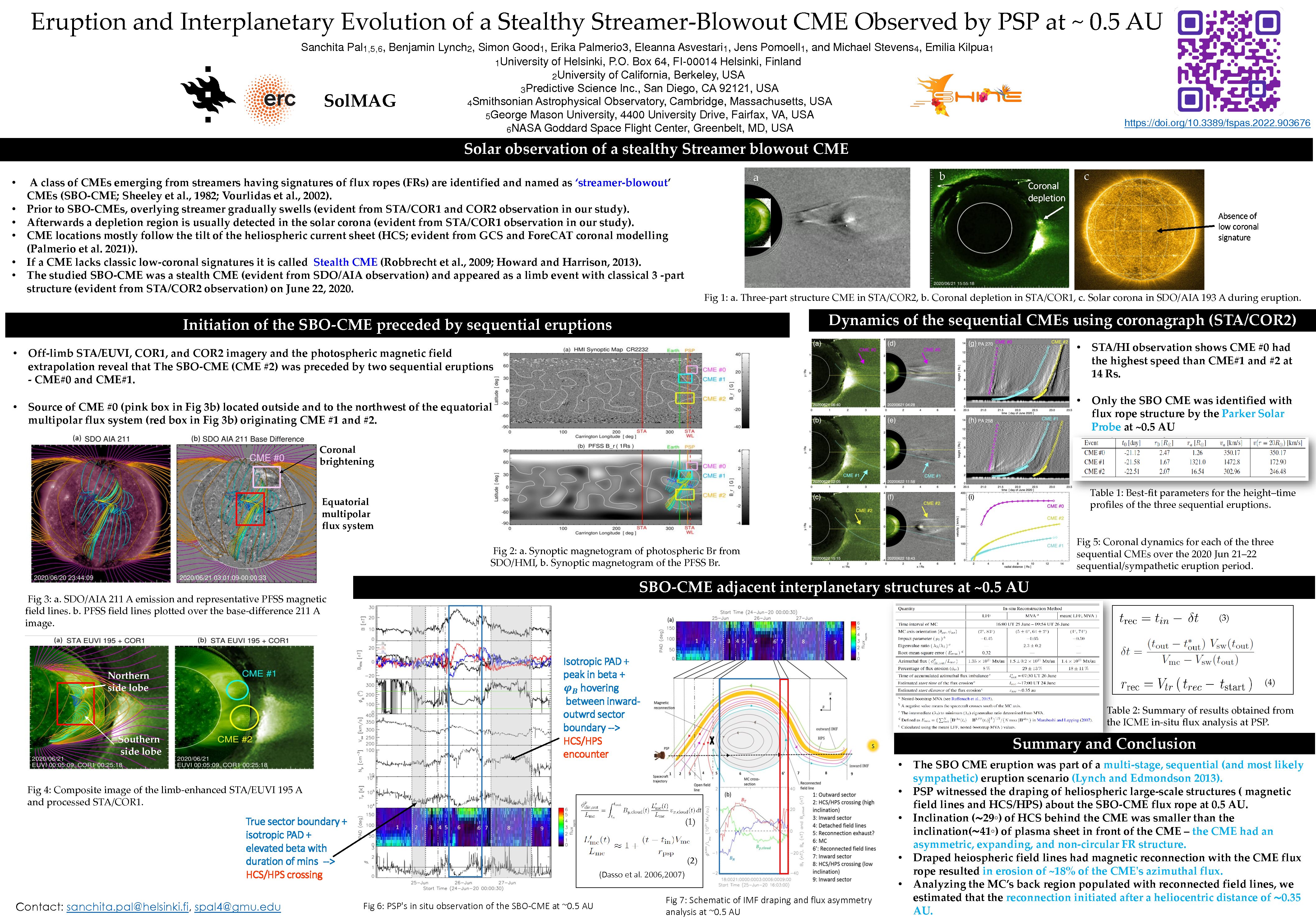Authors: Sanchita Pal (Department of Physics, University of Helsinki, P.O. Box 64, FI-00014 Helsinki, Finland), Benjamin J. Lynch (Space Sciences Laboratory, University ofCalifornia–Berkeley, Berkeley, CA 94720, USA), Simon W. Good (Department of Physics, University of Helsinki, P.O. Box 64, FI-00014 Helsinki, Finland), Erika Palmerio (Predictive Science Inc., San Diego, CA 92121, USA), Eleanna Asvestari (Department of Physics, University of Helsinki, P.O. Box 64, FI-00014 Helsinki, Finland), Jens Pomoell (Department of Physics, University of Helsinki, P.O. Box 64, FI-00014 Helsinki, Finland), Michael L. Stevens (Smithsonian Astrophysical Observatory, Cambridge, MA 02138, USA), Emilia K. J. Kilpua (Department of Physics, University of Helsinki, P.O. Box 64, FI-00014 Helsinki, Finland)
Streamer-blowout coronal mass ejections (SBO-CMEs) are the dominant CME population
during solar minimum. Although they are typically slow and lack clear low-coronal signatures,
they can cause geomagnetic storms. Using extrapolated coronal fields and remote
observations of the off-limb low corona, we study the initiation of an SBO-CME preceded by
consecutive CME eruptions consistent with a multi-stage sympathetic breakout scenario. From
inner-heliospheric Parker Solar Probe (PSP) observations at 0.5 AU, it is evident that the SBO-CME is
interacting with the heliospheric magnetic field and plasma sheet structures draped about the
CME flux rope. We estimate that ~20% of the CME’s azimuthal magnetic flux has been
eroded through magnetic reconnection and that this erosion began after a heliospheric distance
of ∼0.35 AU from the Sun was reached. This observational study has important implications for
understanding the initiation of SBO-CMEs and their interaction with the heliospheric surroundings.


